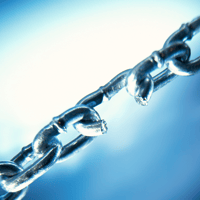Customer engagement is what it’s all about in the world of marketing. Gone are the days when you could rely on catchy slogans to drive a site or product’s curb appeal. Now, you need ways to entice several actions from your audience, whether it’s a click or a checkout.
How do you drive activity to your site or business? Look no further than links.
Links are more than just clickable elements on a page or line of text. They send subliminal messages to your audiences to click. By clicking, your site’s users contribute to their own user experience through contextual links.
Of course, like anything you can use for customer engagement, there’s a recommended way to use links, and there are optimal ways to use them. External links also play a crucial role in SEO by helping search engines understand the relationship between different websites.
You can learn more about using links for better customer engagement. By the end of this article, you’ll know how to use your links for engagement and maximum conversions.
 Internal Links vs. Backlinks
Internal Links vs. Backlinks
Before we talk about using your links for maximum engagement, we need to distinguish between two types — internal and backlinks. Let’s start with the latter.
Backlinks are clickable lines of text from other sites that direct users to your website. These links will often be in blog posts referencing certain pieces of your content.
By being on other websites, these links are generally signs that other site owners view your content as valuable. The more backlinks you have on other sites, the more authority you’ve generated for yourself — and that’s a good thing. External links pointing to your site can significantly boost your page's authority and importance.
However, while backlinks do a lot for your online notoriety and SEO (Search Engine Optimization), they don’t contribute much to creating a good user experience. This is where internal links come in.
Internal links are clickable elements on your site that direct users to other parts of your website. These links allow your site’s users to navigate various aspects of your website. In a way, your internal links are “gateways” to other web pages you want your users to visit.
Because internal links can keep your users clicking, leveraging them is crucial to driving customer engagement. How? This brings us to the first tip for using internal and external links for better customer engagement.
 Tip 1: Position Your Internal Links as Visible Site Elements
Tip 1: Position Your Internal Links as Visible Site Elements
Internal links should be visible by default. After all, they distinguish themselves from other texts on your site or webpage. It is also important to consider how many internal links you include on a page, as too many can negatively impact user experience and SEO. However, you make life easier for your users by using them as visible site elements like buttons.
Positioning your internal links as buttons achieves two things. First, it’s more likely to entice your user to click. Besides that, internal links as buttons or tab elements take your users through a journey of your website.
The endpoint can be a landing page, product page, or service offering. The ball is in your court.
Tip 2: Sprinkle Internal Links on Blog Content
Your blog may get its fair share of traffic from your users. So, if you see a lot of traffic, this internal linking strategy will be helpful. Direct your readers to your site’s high-converting pages by adding links to your blog content.
Internal links in your blog content will enable users to visit other parts of your site as they consume your informative content. To get the most out of this strategy, use internal links strategically. By “strategically,” we don’t mean adding multiple internal links to a 500-word blog post. Instead, put them in where they’d sound natural.
Adding too many internal links to your blogs will cause your links and content to come off as spammy. Make this mistake, and you’ll be putting off your readers. Remember, internal links are important for helping Google crawl and understand your website, distribute page authority, and improve rankings.
 Tip 3: Ensure That No Links Are Broken
Tip 3: Ensure That No Links Are Broken
Broken links aren’t just unsightly. They can put off your readers, causing your bounce rates to increase. Additionally, using nofollow links can help manage the flow of link equity and ensure that authority is not passed to less important pages. As more people leave your site, you’ll have fewer opportunities to create better user engagement. The less engagement you make, the less likely you are to experience conversions.
Strengthen Every Link of Your Marketing Chain with Connection Model
Internal links can do wonders for your customer engagement rates. As you create better experiences with your site navigation, users will keep clicking and eventually call you or complete a purchase.
Of course, linking is just part of an overall content marketing strategy. If you need a company that strategizes marketing based on what your brand is about, contact us! Our company offers a reliable strategic process to boost your organic market visibility, customer engagement, and retention.
Written By: David Carpenter


